Connected with Planet Earth
By John Palka — Posted September 13, 2020
As I write, summer is coming to a close and the appearance of the prairies is changing. The Monarda, hyssop, grey-headed coneflower and black-eyed Susan that used to catch the eye, and that we looked at in the previous post, have largely gone to fruit and now blend with the grasses. Goldenrod and a handful of other flowers are now in full bloom and many of the grasses have acquired a reddish tinge. The ever-changing light sometimes turns the prairies into painterly canvases.
Dragonflies and damselflies have become very scarce. Bumblebees and a variety of other smaller insects abound. Butterflies are still to be seen, but their relative numbers are changing. For example, Eastern Tiger Swallowtails still flit about, but the Giant Swallowtails that used to be so abundant are gone. And the most famous butterflies of all, the Monarchs, are more conspicuous and are starting to prepare for their journey south to the mountains of Mexico.
In the previous post we looked at the prairies from the perspective of the production of nectar by plants and the anatomy and behavior of some of the insects, notably the butterflies and the bumblebees, that feed on that nectar. We viewed such relationships through the lens of co-evolution—the evolution of traits that benefit both partners. Today we will look at two ways in which the whole planetary context in which flowers and their pollinators live affects their lives. I think you will be surprised!
OUR HIGHLY CHARGED ENVIRONMENT
We aren’t usually aware of it, but we live in an electrically charged environment. The surface of the Earth is electrically negatively charged while the upper atmosphere is positively charged. The voltage difference between the two can be huge, in the millions of volts and perhaps even more, and is related to lightning strikes. At a more local scale, this planetary voltage gradient is commonly in the range of 100 volts or more per meter (a meter in the metric system is around 39 inches in the English system). This means that, whenever you stand outside, the electrical field surrounding the top of your head is around 200 volts more positive than is the ground that you are standing on!
Because the planetary voltage gradient is so steep, it has significant and sometimes unexpected impacts. Among these are its effects on plants and their pollinators. Here is how it works.
Plants are filled with water and salts, so they are good electrical conductors, and their bodies, including their flowers, are pretty much at the same voltage as is the soil in which they are growing—negative relative to the atmosphere. Insects fly around in the air. The air is an excellent insulator, so the insects acquire a positive charge that stays with them until they land on something that is connected to the Earth and is thus relatively negative, like a flower.
When insects approach a flower, three situations prevail.
- At first, the electrical difference between the arriving insect and its target flower is in the range of tens or even hundreds of volts. Who would have thought!
- Once the insect lands on the flower, charge flows so as to minimize this voltage difference. This makes the flower less negative relative to the insect than it was before contact occurred.
- As long as there is a voltage difference between the visiting bumblebee and the flower, that voltage generates a mechanical force because opposite charges attract. Thus, any easily movable parts of the bumblebee are pulled toward the surface of the flower and any movable parts of the flower are pulled toward the bumblebee.
Jumping Pollen
While pollen is still sitting on its anther, it is negatively charged just like the rest of the plant. As a positively charged insect approaches, the electrical voltage difference pulls the pollen off the anther. The pollen actually jumps across a very small air gap to land on the surface of the insect! In the picture below, pollen has been transferred to a bumblebee drinking nectar from a Monarda. The little white dots are pollen grains. Some have landed on the hairs, others on the smooth cuticle of the head. In this case the anthers are right nearby, so without sophisticated observation of the process we can’t really tell whether the pollen jumped or was brushed off the anther. Both mechanisms work.
When a bumblebee with pollen on its surface approaches another flower, seeking more nectar, the situation is reversed. The pollen has become positively charged just like the rest of the insect. The flower, connected to the Earth, is negatively charged as usual. Furthermore, electrical charges tend to be more concentrated on the tips of structures than they are on extended surfaces. This includes the stigmas, the sticky tips of the female organs of a flower that project out into the air. As the bumblebee or honeybee approaches a flower, therefore, the greatest electrical attraction exists between the insect and the stigmas. Pollen now jumps from the insect to the flower, but not randomly. It lands preferentially on the stigmas where it will be available for fertilizing the eggs. Thus, the first step in cross-fertilization is aided by the same planetary voltage that is revealed to us when lightning strikes!
Nectar or No Nectar?
In the picture below, you can see both the hairs that cover the body of the bumblebee and the pair of antennae that project symmetrically from the head, one to the right and the other to the left. Both the antennae and the hairs of the bumblebee sit in tiny sockets and move under the influence of the electrical field.
In bumblebees, the hairs move substantially more than do the antennae, basically because they are much lighter and more delicately suspended in their sockets. In honeybees, however, it’s the antennae that appear to be the principal electrosensors. Either way, the nerve cells at their bases then send signals to the nervous system, reporting that the hairs and/or antennae have been deflected. Of what value might this be to the bumblebee?
The electrical field, and therefore the movement of the hairs, is greater in a flower that has not had an insect visitor for a while than it is in a flower that has been visited recently. This is because charge transfer between flower and insect is always such as to reduce the magnitude of the difference between them. A weak field, signaled by little or no movement of the hairs, is potentially a message to the newly arrived bumblebee that she might as well go on to another flower because this one has recently been drained of its nectar by another visitor. Conversely, a strong field, generating strong movement of the hairs, is a signal that the flower has been left alone for some time and the bumblebee should stay and feed.
Do bumblebees actually use these electrical signals and thereby increase their foraging efficiency, not wasting time probing flowers that are empty of nectar because they have recently been visited by another insect? Recent evidence says that yes, they do.
Remarkable, isn’t it. An electrical field surrounding the whole of planet Earth helps individual bumblebees transfer pollen from one flower to the next, and also helps them seek out the nectar produced by individual flowers more effectively. It thereby promotes cross-fertilization in flowers and helps pollinating insects survive, raise a brood, and give rise to a new generation that has the potential to be better than the parental generation was. We are seeing cross-fertilization and feeding, both of which are important for evolution, being supported by the planetary electrical field!
HOW DO YOU GET FROM MINNESOTA TO MEXICO?
The story of how Monarchs fly from Minnesota to Mexico at the end of one summer and come back again at the beginning of the next is told to midwesterners again and again. Families with children raise Monarch caterpillars at home and are thrilled to release the adults that emerge after metamorphosis. Property owners are urged to cultivate plants that will support the Monarchs. Nature centers attach bands to individual Monarchs so their journey can be followed and studied. The numbers of Monarchs have declined sharply, primarily because of the loss of habitat and of the food resources that once were vastly more abundant, but we are increasingly concerned about these jewels of Nature and there is an increasing number of efforts to protect them.
Fuel for the Journey
Many people are aware that Monarchs lay their eggs on milkweed (Asclepias sp., Family Apocynaceae). When the eggs hatch, the caterpillars feed on the milkweed. However, when adult Monarchs are getting ready to migrate south from Minnesota, their source of the nectar they need to store up energy (in the form of fat) for flying is not milkweed but a variety of other flowers. In our area, blazingstar (Liatris sp., Family Asteraceae) is probably the Monarchs’ favorite. For people who want to plant butterfly gardens, therefore, knowing about the Monarchs’ actual preferences is important.
Any place where blazingstars are in bloom, you are likely to see Monarchs—often not just one, but as many as dozens. While I was recently wandering around my beloved Eastman Nature Center watching for Monarchs, first one of them settled on a stalk of blazingstar and started to drink. Then another approached, started to uncurl its proboscis in preparation for feeding, and settled on a flower just inches away from the first Monarch. The interval between the two photographs is a fraction of a second.
And below, on a different blazingstar stalk, is a pair of Monarchs on adjacent flowers, content to be in each other’s company! In the following picture the upper Monarch has shifted upward by one flower. The lower Monarch has taken off and is just curling up its proboscis. This time, the time interval between the two pictures is a couple of seconds.
Much as they love blazingstars, however, Monarchs are not exclusivists. For example, below is one approaching a cluster of false sunflowers (Heliopsis helianthoides, Family Asteraceae), its proboscis just starting to extend in preparation for feeding. In the following picture is another, on the same cluster of sunflowers, taking full advantage of the bounty of nectar.
Even though blazing stars and false sunflowers belong to the same botanical family, the Family Asteraceae, neither a human nor a Monarch would confuse them!
Finding Their Way
Flying the several thousand miles from Minnesota to Mexico is a challenge, not only from the point of view of the energy it requires but also as a navigational task. Navigation has fascinated biologists for decades, and some new information has recently come to light.
The first navigational requirement is to fly south, not in some other direction. For this, a Monarch needs a compass. The most convenient compass, and one that Monarchs do indeed utilize, is the Sun. However, this presents a problem. As the day goes by, the Sun moves across the sky, so in order to steer by the Sun, a Monarch needs to know what time of day it is. Boy Scouts and wilderness travelers are trained to check their watches. What about Monarchs?
Most organisms have built-in (endogenous) biological clocks. The dominant clocks of most animals, including us humans, are in the brain (ours is situated in the hypothalamus, a small region at the base of the brain just above the pituitary gland). However, a close look at Monarchs reveals that the clock they use for navigation is not located in the brain. Rather, it is in the antennae.
We have seen the antennae in every picture of a butterfly or a bumblebee, but heretofore we have not paid much attention to them. Let’s look again. The single proboscis of this Monarch is like we have seen before, probing among the florets of a blazingstar flowerhead seeking those that have nectar available. The two antennae, with their characteristic club-shaped tips, are exploring the space around the head.
It has been known for a long time that the antennae are important sensory structures. For example, they are covered with chemoreceptors. When a butterfly, moth, or bee is searching for a flower to feed on, it uses its antennae to trap odor molecules drifting about in the air. Electrical signals generated in the chemosensory cells of the antennae travel to the brain, where calculations carried out by brain cells tell the insect in which direction to fly to reach the source of the odor molecules released by nectar-bearing flowers. Antennae also have mechanoreceptors that help the insect in various tasks, such as maintaining its balance while in flight.
In addition, however, the antennae of Monarchs, and quite possibly of all butterflies and moths, contain cells that constitute a clock. In all biological clocks, specific chemical reactions occur on an approximately 24-hour cycle and ultimately influence behavior. Biological clocks are therefore called circadian, meaning “approximately daily” (circa=approximately, diem=day). This cycle is normally synchronized to the Earth’s actual daily cycle—23 hours, 56 minutes and 4.09 seconds—because the cells of the clock get timing input from photoreceptors or are themselves light-sensitive. Such synchronization is usually called entrainment.
Here’s how we know that the clock that Monarchs use is located in their antennae.
- If you trap some Monarchs, hold them confined in a cage for a few days while they are exposed to the normal light-dark cycle, and then release them, they fly south as they should. Their clocks are well entrained, and they know what time it is.
- If you keep a similar group of Monarchs in the dark, their clock gradually drifts out of synch with the real time because the cycle of internal clocks is significantly shorter than the actual daily cycle. As the days go by, the endogenous clock, no longer entrained to the actual daily cycle, signals the time ever more incorrectly. When Monarchs that have been maintained in the dark for twelve to fourteen days are finally released, they fly north rather than south!
- If the Monarchs are maintained in the normal light-dark cycle but their antennae are painted black, they behave as if they had been held in the dark. After twelve to fourteen days, they fly north instead of south.
- If their antennae are painted not with black paint but with clear paint, they fly south as they should.
This simple experiment tells us that Monarchs do, indeed, depend on an internal clock to fly from Minnesota to Mexico, and that this essential clock is located in the antennae. There is also a clock located in the brain, but it plays other roles—it does not guide navigation.
Scientists have known for at least a century that most living organisms have internal clocks. In recent years, the molecular mechanisms that constitute such clocks have been uncovered. They appear to be universal, but the initial work was done in the fruitfly Drosophila in which genetic tools could be used. Three investigators—Jeff Hall and Mike Rosbash of Brandeis University and Mike Young of Rockefeller University—were awarded the Nobel Prize for this work in 2017. I was especially thrilled when this happened because I had done a bit of work with all three (mainly teaching, not research on clocks), but particularly with Jeff Hall. The relatively simple experiments on Monarchs, however, demonstrate that understanding molecular mechanisms does not tell us everything. Even something as basic as asking where in the body a specific clock is located can bring yet another surprise!
THE MORAL OF THESE STORIES
In story after story posted on Nature’s Depths, we have seen that organisms on our Earth do not exist in isolation. Rather, they are functionally interlinked in networks of astonishing complexity. In addition, life depends on and interacts with the Earth’s non-living components. We see this, for example, in planetary cycles such as the water cycle driven by solar heat; in the way sunlight drives photosynthesis and thereby provides the energy required by most living things; in the basic conditions required for life such as moderate temperature; and in the chemical building blocks of the molecules of which living matter is composed.
In this post we have seen two other ways in which life is tied to the properties of our whole planet. The planetary electrical field, of which we are generally unaware, plays a role in some biological functions. The Sun serves as a compass for vast numbers of migrating or otherwise navigating organisms but can only do so if those organisms develop internal clocks. There are many more such planetary relationships. For example, many organisms, including humans, are sensitive to the Earth’s magnetic field. They (and we) have built-in magnetic compasses, functionally just like the manufactured ones that we learn to use when navigating in the out-of-doors. Truly, we and our planet form a single, integrated system.
We know that vast and complex system only partially. Every year, new components and new modes of interaction are discovered. No matter how much is yet to be learned, however, we know incontrovertibly that we humans do not and cannot exist by ourselves. The Earth is not merely our home, like a house is a home that we can walk into but also leave whenever we wish. Rather we, and other living creatures, and borderline components like viruses, and non-living components including the air and the water and the soil and the Earth’s gravity and its magnetism and its electrical field and its rotation that gives us days and nights and the Sun itself, and on and on. . .everything—everything is part of a single system.
The great Buddhist teacher Thich Nhat Hanh has introduced a wonderful word for this truth—interbeing. Try it out. See what it feels like to be consciously aware that you inter-are with absolutely everything around you, both nearby and far away.


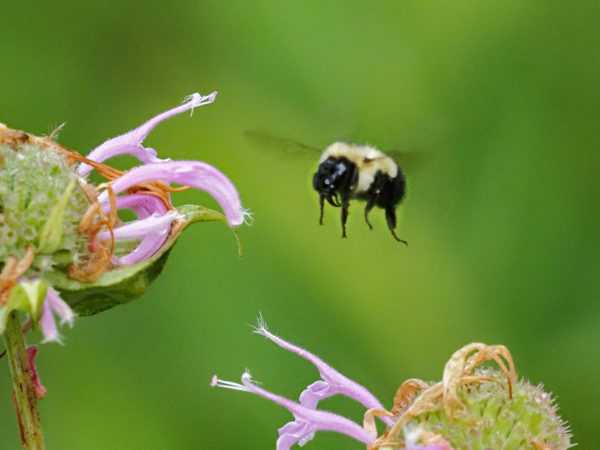
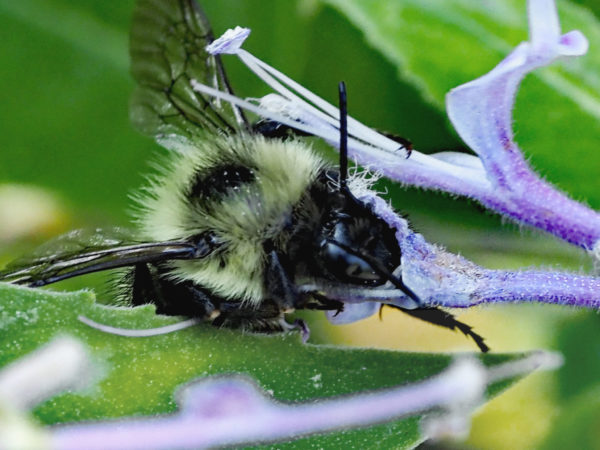
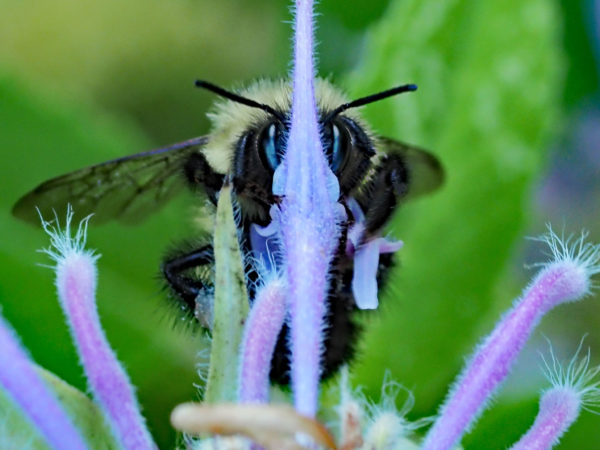

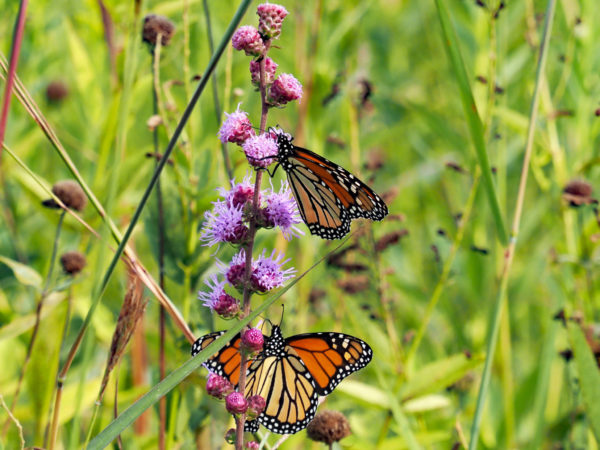
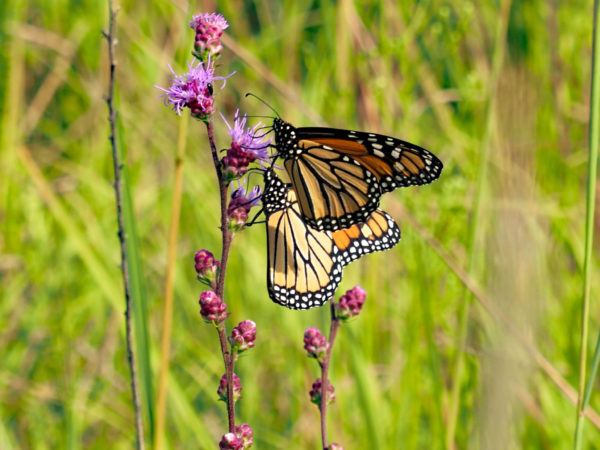
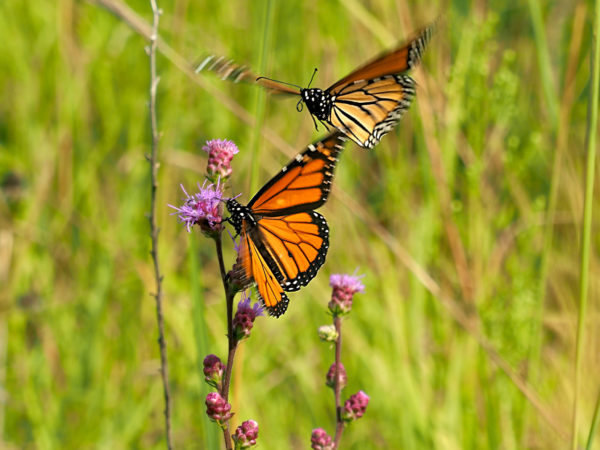
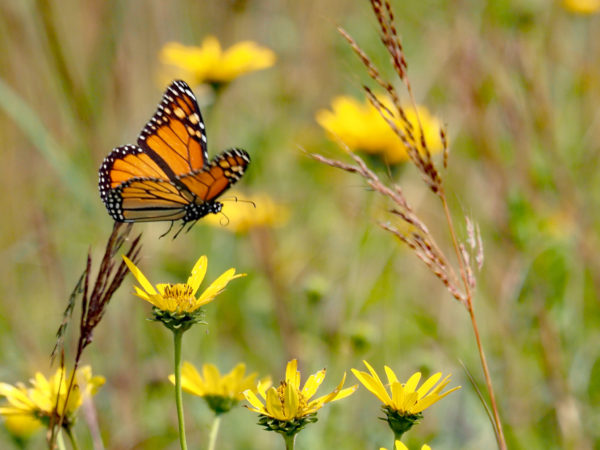
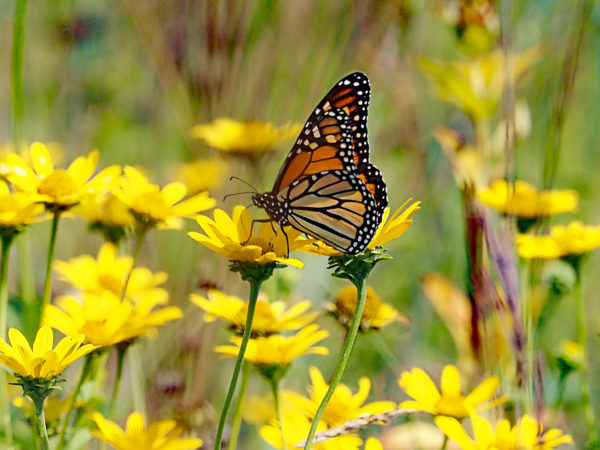
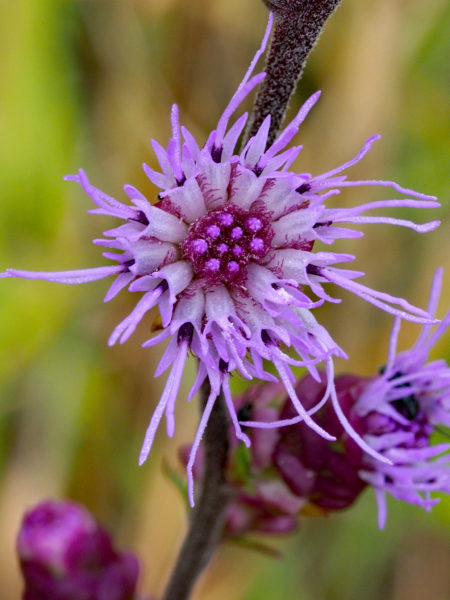

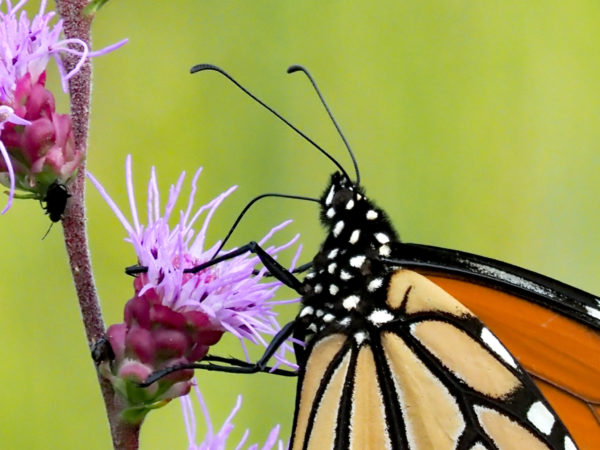
Johnny, I love these posts! I learn so much. i am writing a novel where the main characters are a family of beekeepers. this is loosely based on my own family–grandfather and father. I am reading the ABC XYZ of Beekeeping, A.I. Root–the 1923 edition that was my grandfather’s. These men would be so amazed.
Hi, Christina. It’s enchanting to hear that a post on Nature’s Depths has at least a remote connection with a novel-to-be! But you’re right, of course. We gain new insights every year and, no matter what outside reputation science might have, in my experience they more often than not point to previously unsuspected connections. When you look at Thich Nhat Hanh’s expositions on interbeing, they are filled with insights based on science.
Wonderful once again, Johnny! Sharing it with friends.
Thank you, Kit. For whatever reason, this post was even more of a stretch for me than most have been.
Indeed, like most people I was not aware of the planetary electrical field and how it plays a role in cross pollination and I suppose making of honey.
Great insights!
I, too, was amazed when I first read both about the planetary electrical field itself and about its biological roles. Jumping pollen and lightning strikes???
Dear Johnny,
I sure would love to walk Eastman Nature Center with you sometime. My North Carolina sister created a butterfly garden in her backyard about 4 years ago. They are having phenomenal success seeing caterpillars and then watching them spin their chrysalis and then take off. Sending this off to her to enjoy.
Let’s do it, Ann! And thanks for passing my effort on.
I have been teaching electrical forces and fields for over 4 decades. I did not know about the information you have shared in this post. I do plan to use this information in my upcoming lectures.
This post reminds me of the articles published in National Geographic. The narrative and associated images are beautifully integrated.
Please keep on writing these posts
Thank you, Alok. I think you will find that the links I provided to sources on the planetary electrical field will provide you with good material. The Wikipedia article is also good. It’s fairly technical, but you are a physicist! If you ever want more resources, please just let me know.
Hi, Johnny,
I love all of your posts, but this one is off-the-chart great! Thanks for all the research! I hope that you are doing well,
Sue
Thank you so much, Sue! And yes, I am doing well. I hope you are too!
Like Christina and Rajiv, I learn something every time. The electric field I had never thought about, and although I’ve read quite a bit about bird navigation, I had never asked the question of butterflies. I’m going to forward it to my former student in Mexico who is an ethno-entomologist (a rare species indeed).
I’m so glad you are able to do these again.
I’m like my readers, Steve. I learn something every time! Ethno-entomology sounds like a really interesting hybrid field. I bet that s/he has a lot of wonderful stories to tell!
She, in fact, Miriam Aldasoro Maya, Ph.D. UW, now at Colegio del Sur in Villahermosa, Tabasco, Mexico. She has done projects with several indigenous groups in Mexico and one (though my arranging) in southwest China.
Wow! It would be great to hear from her.
hi Johnny,
I am only a bit embarrassed that I did not know about, or had forgotten about, the electrical field between the ground and the air. I started by reading the Feynman lecture, and being quite interested these days in weather and fire, can see how these might be related! And imagine how plants and insects take advantage of these fields–so interesting! Thank you as always.
I myself followed a very indirect route to putting together this information. It started with a notification from the National Science Foundation about the paper that gives evidence for ultra-high atmospheric voltages. It had nothing to do with biology, but it got me started on an exploration that brought me to those amazing studies on jumping pollen and the detection of earlier pollinator visits by sensing a flower’s electrical field. For a journey like this, it helps to be retired!
Thanks Johnny. These are some fascinating tidbits of natural history. I love learning from your posts.
Thanks, Tim. I’ve long been aware of the basics of solar and stellar navigation and the need for internal clocks, but the influence of the planetary electrical field was a great surprise to me!
Hi Johnny How lovely and in tune you are. Thank you for sharing. As I continue to add to my garden I think of all that can benefit aside from my joy of watching the planet move me and my garden.
Thanks for putting gardening in that beautiful framework, Charlene!
Hey Johnny,
This was just fascinating! I had only a hint of knowledge about the natural electrical fields. I have sat in my back yard for hours marveling at how the bumble bees and bees work all the flowers around me. Now I know why they spend more time on some and less on others. The Monarch’s use of the sun as their compass was eye opening as well.
Thanks so much!
Dan
PS: As you likely know, the smoke in the Seattle area is at a high level, high enough apparently to keep the bees in their hives.
Thanks, Dan. About time spent on flowers, don’t forget that there are plenty of other factors besides electrical charge. But is amazing that a bumblebee could tell something about the quantity of nectar in a flower before it even lands on it! If I remember right, the range of the electrical effect is estimated to be something like half an inch. And the bees are staying in their hives! I hope you’re taking a lesson from them.
Wow, I am FILLED with amazement! Not only for the magic of electricity in nature, which I knew nothing about, the bumble bees, the flowers, and the whole dance of inter-connectedness, but for the fact that I read the whole thing start to finish, couldn’t stop! (Normally not a reader of anything remotely scientific – you make it fascinating!!!) Thank you.
Dear Shambhavi, Your wonderful comment made me teary-eyed!
Wow Johnny—— Another fascinating exploration.!!
The scope is remarkable- thank you..!
The electrical charge description has caused me to reflect on a habit our dog exhibits that we have repeatedly noticed.
When Surya approaches a shrub with his ever-inquiring nose he will often jerk back as if spooked or threatened. Your description of the significant charge present has me pondering—- has a ‘spark’ occurred?? Does our friendly 50-lb Labradoodle feel a discharge?? Hmmm
I too thought he would be grounded – but on examination I realized his pads were extremely dry and quite cracked… so I’m not sure…
Always a delight to be expanded by your wonderful insights.!!
Hi, Marty. Observations like yours often open the doors to new understanding. At the same time, in the absence of evidence we have to consider alternative hypotheses. Here’s one: The particular shrubs from which Surya jumps back carry inconspicuous but sharp structures, perhaps pointy or sharp-edged leaves or dried-out and/or broken stems, and he is sensitive to those. Also, does he jump around at other times, maybe when he’s happy? If he does, maybe he just really likes playing around with shrubs! So, we get to think about sparks, spines, and joy!
God I love this stuff. Thanks so much and I’ll look forward to your next one!
I’m glad!! You might enjoy some of the back ones, too. Just browse the archive.
Thank you Johnny for this exploration. It includes such a range – from aspects of flowers and insects we can experience quite directly with our eyes to things beyond our vision at the scale of huge (planetary electrical fields) to biomolecules (clocks in cells). And as you point out, all connected as it must be. In your introduction you wrote, “I think you will be surprised!” I was indeed. Just to mention two examples (1) I had never before encountered the idea of the planetary electrical field and (2) how interesting to learn about the antennal clocks of Monarchs. Thank you for including links in your writing. I followed many of these – as you mentioned it’s nice to be retired and able to do this.
Thanks, Karen. I find myself learning more and more every time I put a post together!
Wow. You leave me speechless (perhaps “silent” is more accurate.) Thank you.